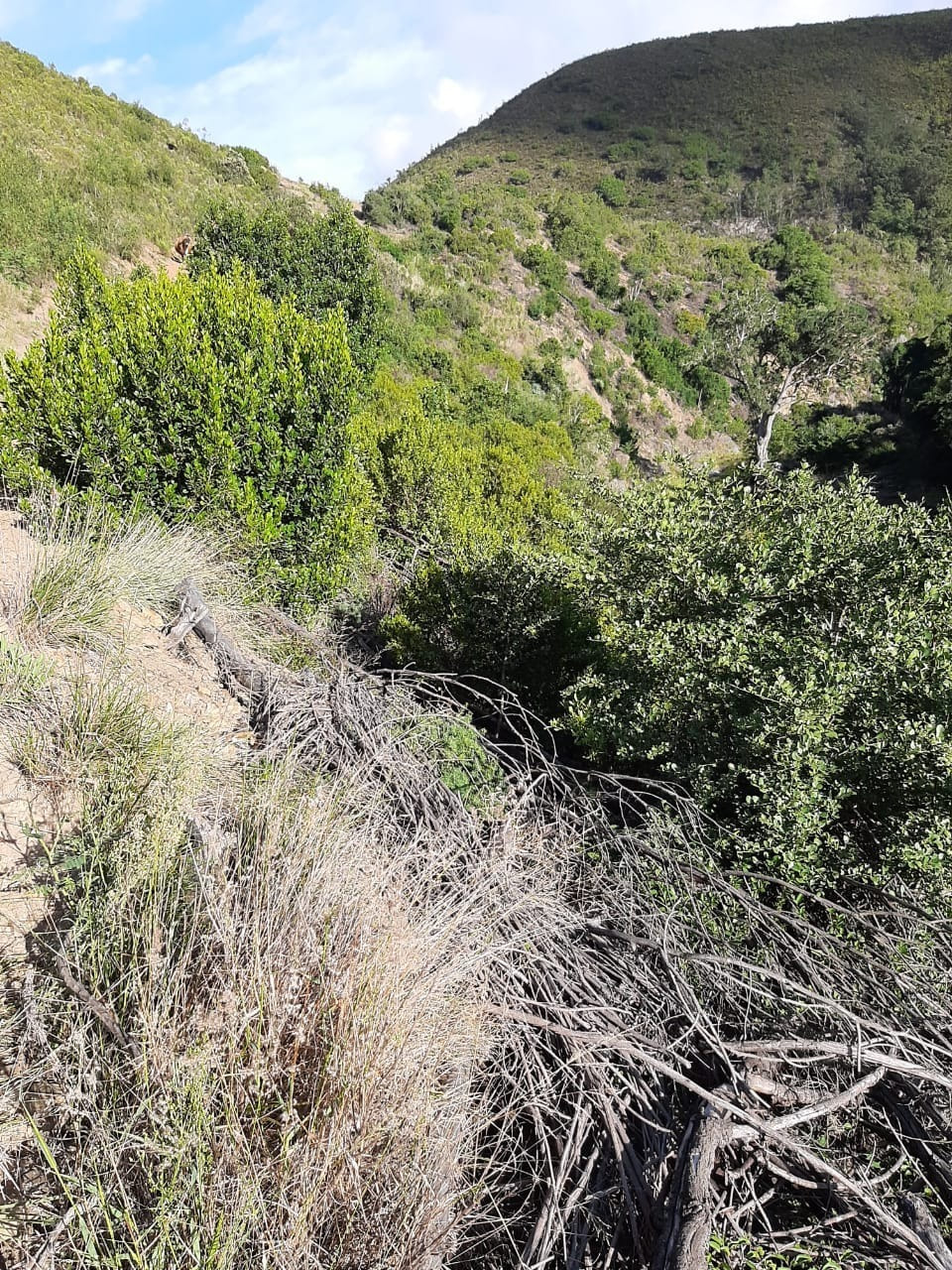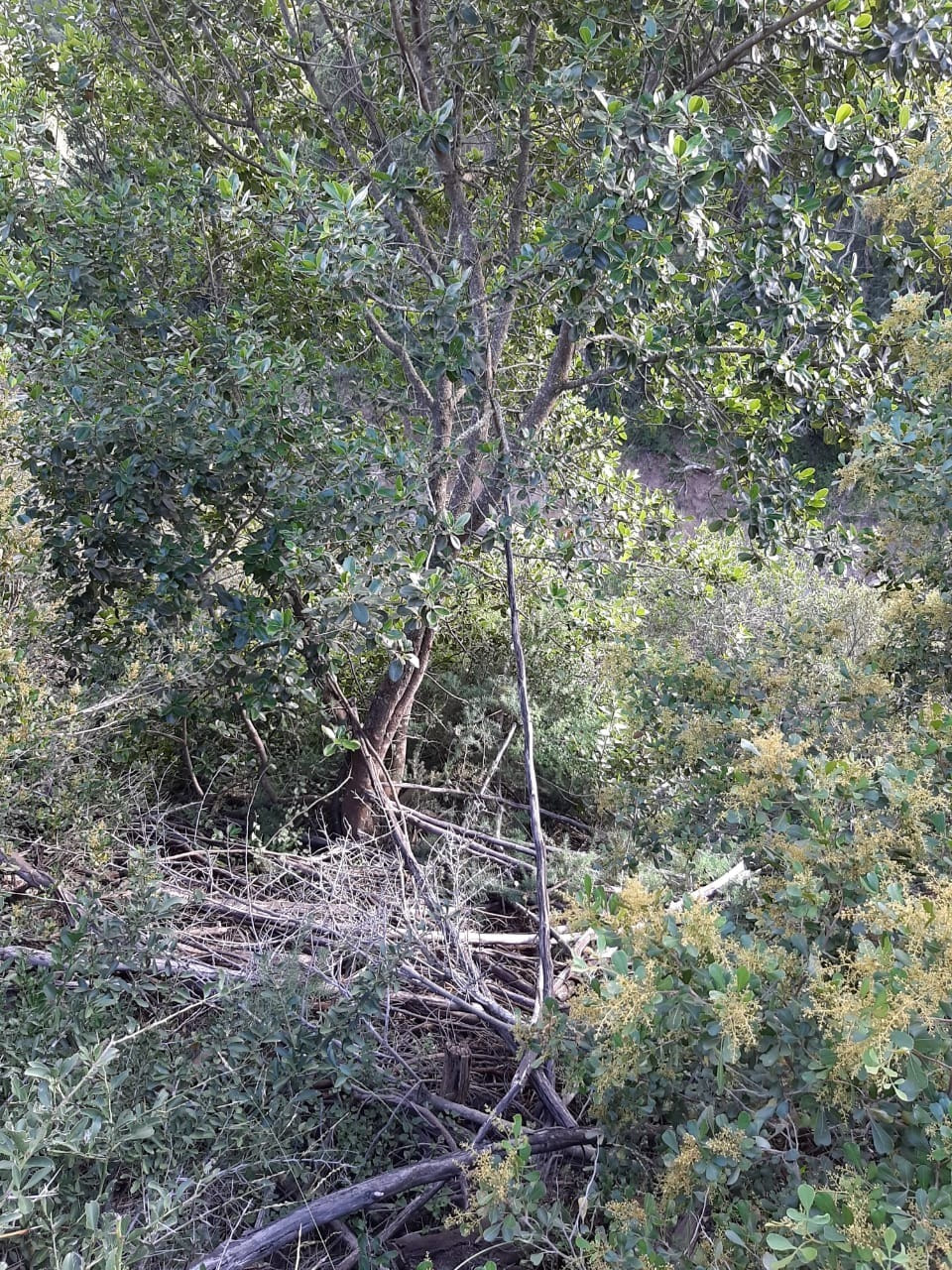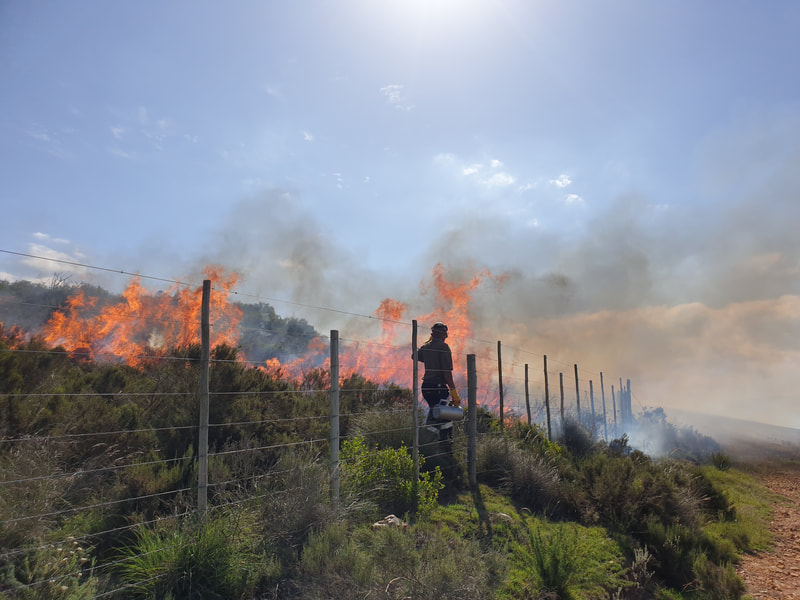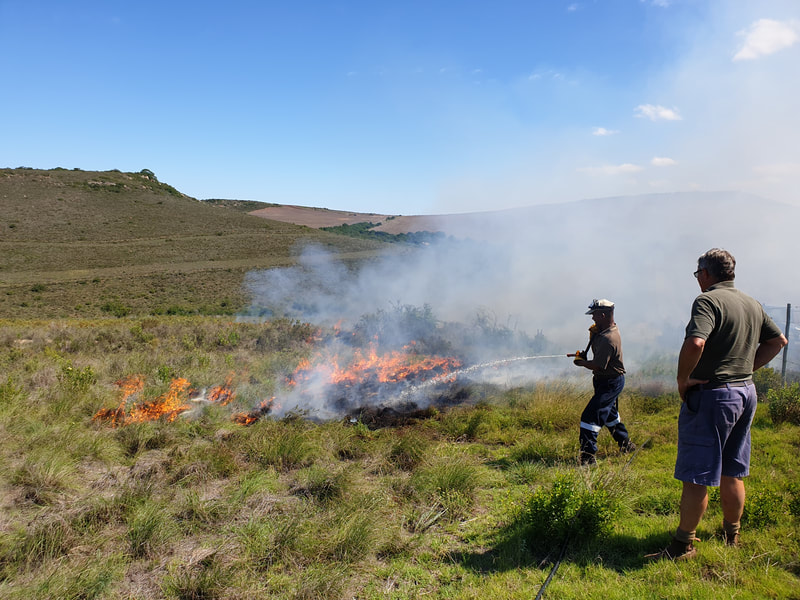|
One of the Conservancy’s main activities is the removal of alien invasive vegetation. We practice three main methods to eradicate them, these are chemical, physical, and biological approaches, either alone or in conjunction. While, we utilize all methods in our area, this blog will concentrate on mechanical and chemical removal and some effects that have been identified in relation to fire. These techniques commence with the mechanical removal of the vegetation with the aid of machinery, followed by the application of herbicide on the resulting stumps. The remains are stacked and burnt to decrease the fuel load in the event of a wildfire. Two types of burn intensity can be employed, a cold or hot burn. Both come with their advantages and drawbacks. In our experience we have found hot fires often occur and are necessary when removing large fuel loads in an area that has been cleared of woody alien vegetation. The alternative would be to remove the material from the property, this option is costly, time consuming, and often impractical as clearing usually occurs in areas that are inaccessible to vehicles. However, there are disadvantages to hot burns. One of our landowners, Keith Moodie, observed the impacts of a hot burn on the rejuvenation of forest vegetation and shared some images from his experience. He hypothesised that a hot burn reduces subsequent regrowth of vegetation, damages the seed bank and the resulting biodiversity. This applies in areas that were originally natural forest. This concept is illustrated in the recovery of his land in these images. The area that endured a hot burn was dominated by grass and Rhus species (Family Anacardiaceae), the unburnt land saw a variety of tree species growing through the unburnt wattle stacks. He acknowledges that the follow up herbicide application is often more challenging through the stacks of wattle but believes that fewer follow ups would be necessary if left unburnt.
An article written by (Holmes et al, 2000) corresponds with Keith’s observations. The article describes the technique of felling aliens and burning them as intrusive but explains that this technique is useful in removing alien invasive seeds and non-sprouting aliens. Our fire manager Twakkie (Goliath Highburg) agreed with this concept. He explained that forest species struggle to re-establish after a hot burn but other vegetation types such as the Fynbos biome requires a burn every 10 – 15 years. In conclusion, it is therefore very important to decipher the type of vegetation where you are working, the ultimate restoration goal (forest versus fynbos) before applying the correct fire regime. Our conservancy tries our utmost to combat alien invasive vegetation with minimal impact on the environment, while protecting our farms. We are constantly adapting our approaches to alien invasive removal, depending on the results of former removals and feedback from landowners. Do you agree with our approach? What have you observed? We welcome your feedback and comments below. Reference: Holmes, P.M., Richardson, D.M., Van Wilgen, B.W. and Gelderblom, C., 2000. Recovery of South African fynbos vegetation following alien woody plant clearing and fire: implications for restoration. Austral Ecology, [PDF] 25, pp. 631-639. Available at: https://0-doi.org.wam.seals.ac.za/10.1111/j.1442-9993.2000.tb00069.x [Accessed 23 April 2020].
2 Comments
Twakkie (Goliath Highburg) our fire officer has assisted with many controlled burns and wildfires. He has completed the necessary qualifications and has immense experience in the field. His vast knowledge makes him the go-to person when wildfires occur, or when landowners need to burn their veld. He remains calm and collected, and always delivers clear and understandable instructions to those who assist him. Working with him in any fire related scenario is a valuable learning experience. Many landowners work with Twakkie at this time of year to plan controlled burns.
Controlled burns are important because they reduce the amount of fuel that could burn in a wildfire and thereby reduce the risk of infrastructure damage, loss of lives and injury. Another important benefit is the increased health of the environment. Two of the biomes we find here, fynbos and renosterveld (part of the fynbos biome), need to burn naturally. These biomes will lose diversity and degrade without the natural occurrence of fire. Fires allow suppressed species to establish, some fynbos species require fire to disperse and germinate seeds. We therefore partake in strictly controlled burns throughout the conservancy during the fire season which normally runs over the winter months. However, we are particularly careful when burning renosterveld as the optimal burning time for renosterveld is late summer / early autumn (i.e. February/March) to reduce damage to the bulbs. Here is more info on the specific requirements for burning renosterveld. Twakkie monitors the natural vegetation and consults landowners. All members of the conservancy are required to be members of a Fire Protection Association, either Overberg FPA or Southern Cape FPA. Once the landowner agrees to burn Twakkie, assists the landowner in gaining a permit from the relevant authorities and begins planning the burn. He will take slope aspect, temperature, humidity, wind direction and speed, and the veld into consideration. The date will be set on the day with the best suited weather conditions. The landowners are always ultimately responsible to give the final go ahead for the burn and for decisions made during the burn but Twakkie is on hand to assist and ignoring his advice usually has serious consequences! Typical equipment on a burn includes, a bakkie sakkie, beaters, drip torchers and spray backpacks. A water source to refill the water carrying equipment must be available and easy to access. Once the burn is completed the veld will be monitored to ensure that the fire does not flare up again and any burning logs or vegetation will be doused with water. |
AuthorGVB Conservancy Staff Archives
May 2024
Categories |





 RSS Feed
RSS Feed






